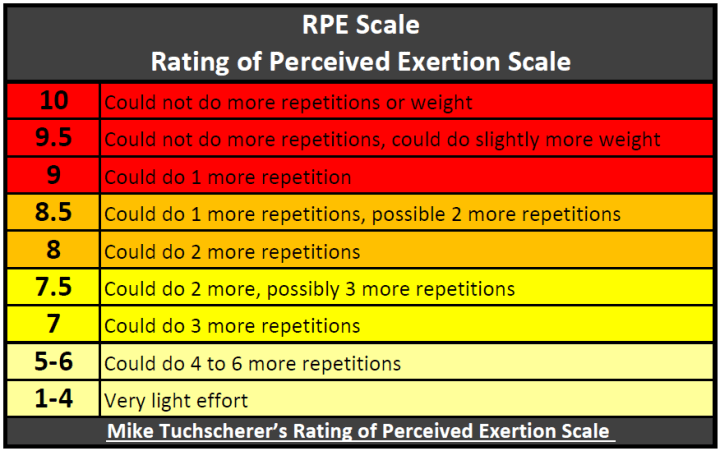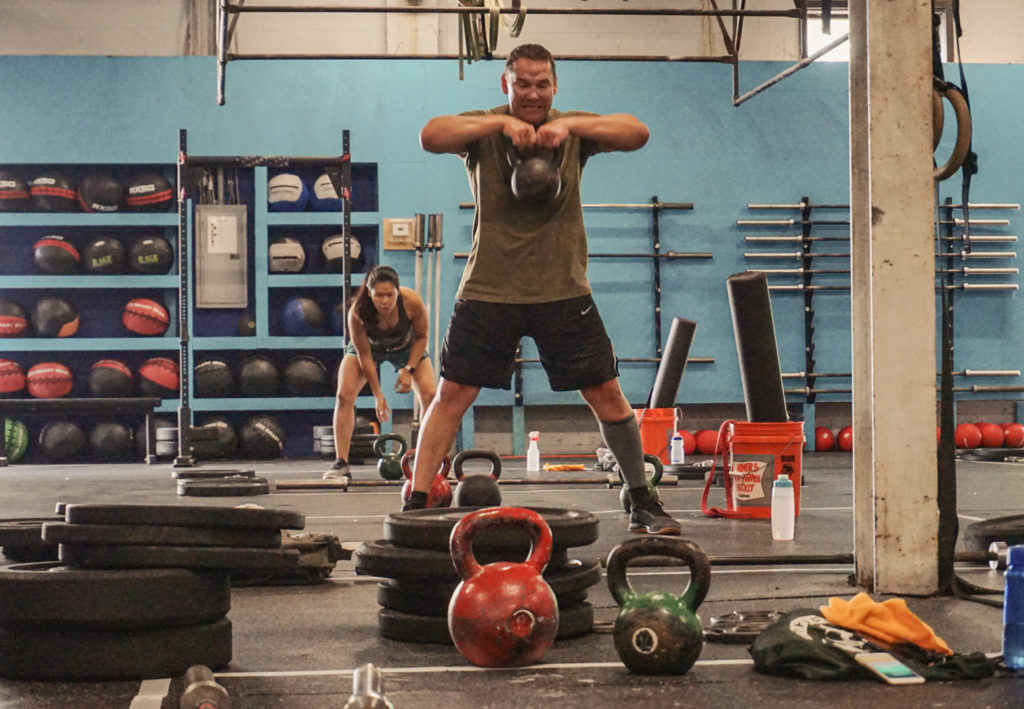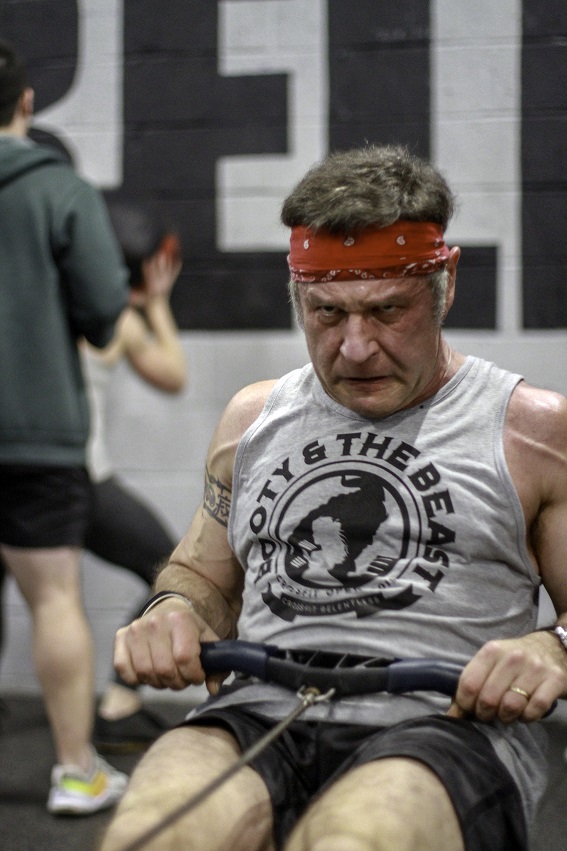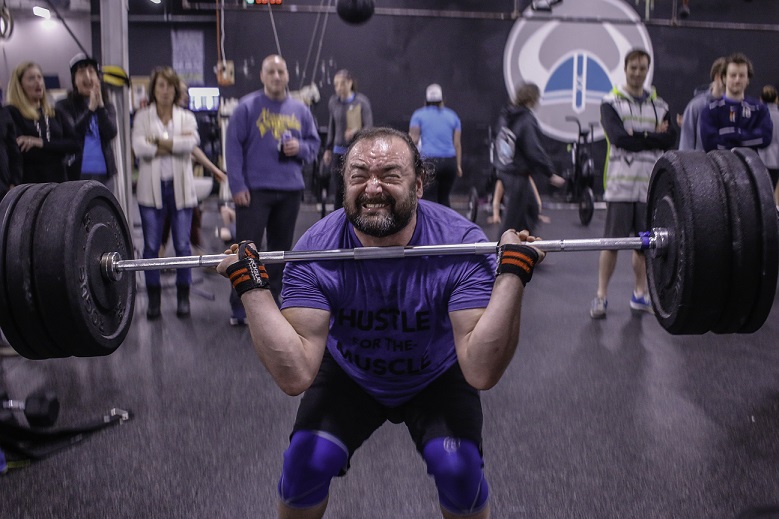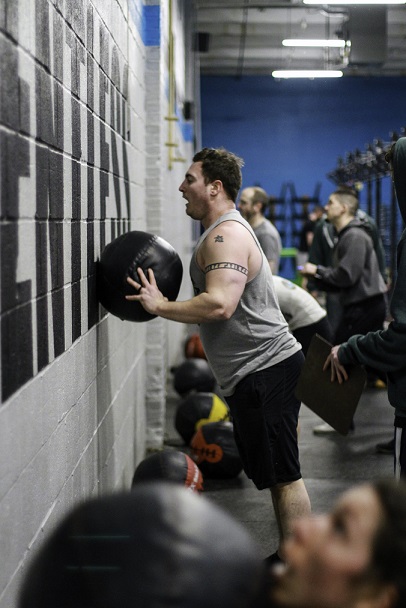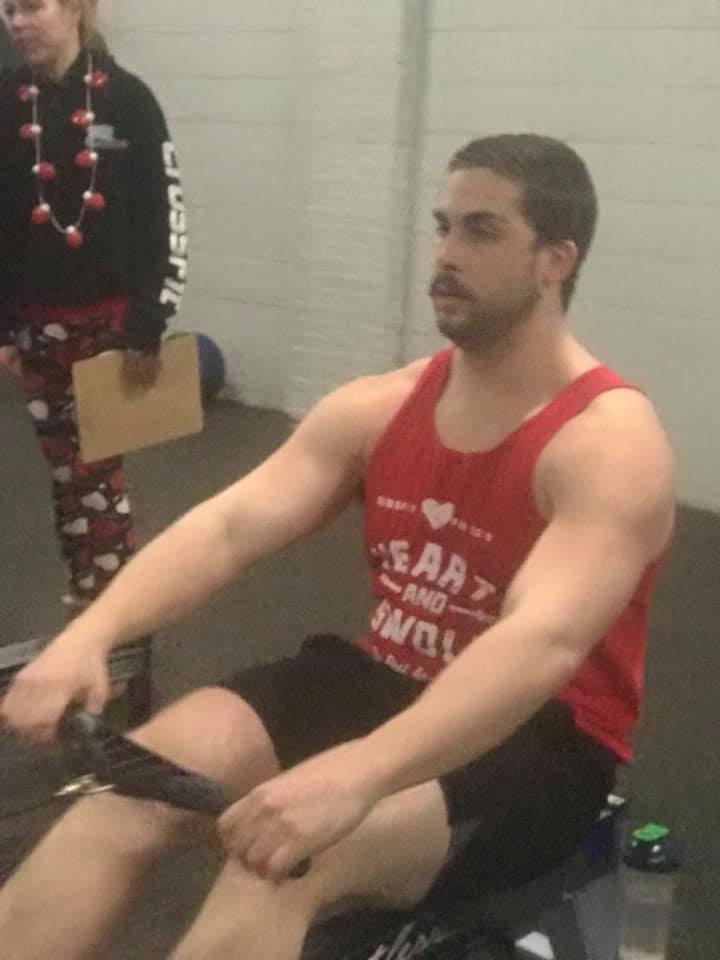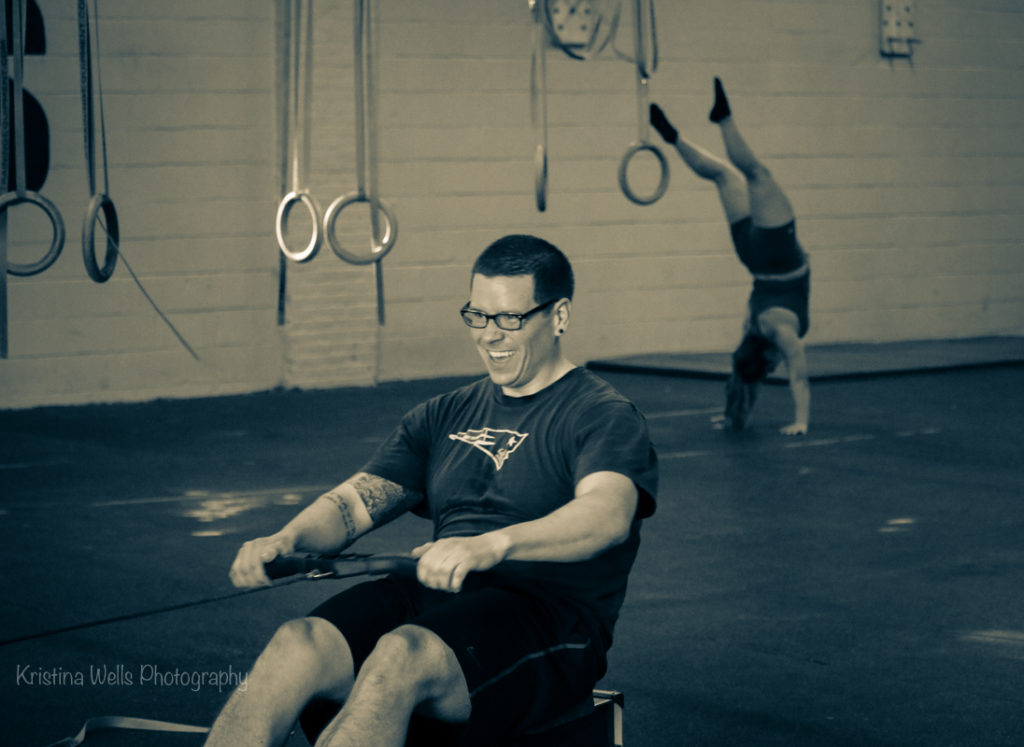Rate of Perceived Exertion for Metcons
by Erik Castiglione
If you’re a regular reader, then hopefully we’ve hammered home the point that training FOR maximal intensity does not mean constantly training AT maximal intensity. Going too hard too frequently leads to poor recovery and kills your gains. So, we try to modulate your effort in our workouts with exercise selection, and by explaining the intent of the workout. When it comes to intent, there are two general ways to estimate your level of effort: percentages, and RPE, or Rate of Perceived Exertion. The goal of both scales is the same – to dictate how your training should feel. Both scales are used for running, and for lifting (lifting also uses a third scale called Reps in Reserve, but if you look at the RPE scale below, you’ll see that they’re largely the same thing). Let’s look at the RPE scales for each. Lifting is on the left, and running is on the right.
As you can see, in both instances, 10 is max effort, while 5 is a sustainable effort. Both lifting and running tend to lend themselves nicely to the RPE scale as a descriptor, theoretically, at least. In practice, it’s much harder to use, especially for lifting. Why? For both, you really need to know yourself as an athlete. And unfortunately, most of us either underestimate our abilities, or we get a little overzealous. We either go too light or too heavy with weights, or we push too hard when we’re not supposed to or go to easy when the goal is to go harder. It takes years of experience as an athlete to know yourself enough to use this method correctly. And so, we prefer to use the percentage scale here at Viking Athletics.
When it comes to weights, percentages are super easy to calculate. You have a max number, and you take the appropriate percentage of that number. Boom, done. We’ve written previously about how percentages are guidelines and can be adjusted if you’re having a crappy day, but at least they give you a very clear starting point.
When it comes to metcons, it’s a little more challenging. We tend to describe them in terms of percent effort, because it’s consistent with the way we talk about lifting. If we’re doing row or run intervals, percentages are easy. You have your benchmark pace, and we can assign a certain percentage of it. Or, we can talk about percent of your max heart rate. When we mix and match running, weightlifting, and gymnastics, a percentage alone doesn’t adequately describe the goal. So, we expand a little by talking about individual movements and how they should be broken up. Let’s take a step back and make things a little more general. Below is an all-in-one chart I’ve put together that lumps together RPE and percentages for metcons, along with how it should feel, what the workout should look like, and what YOU should look like when doing it. Enjoy!

